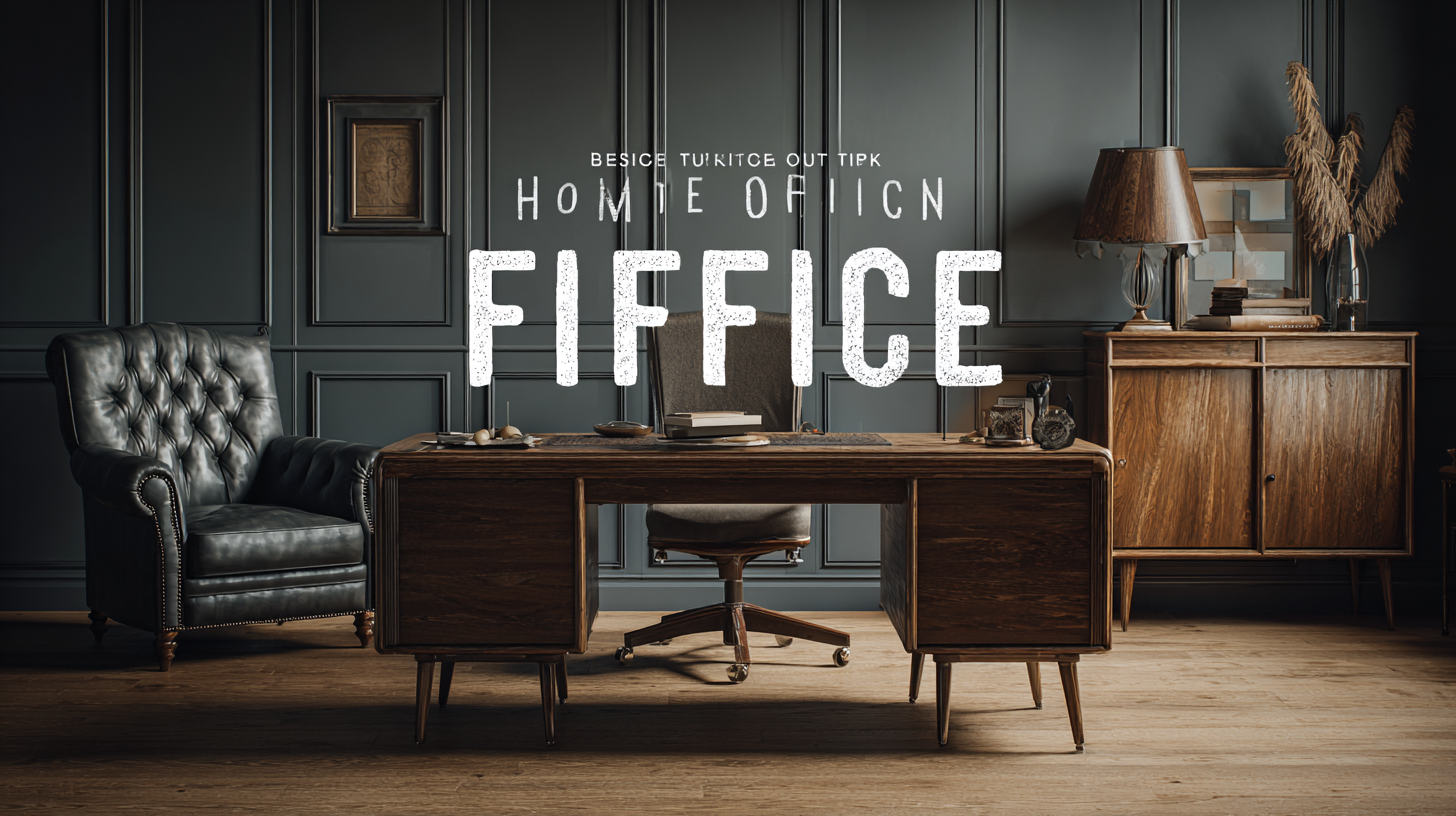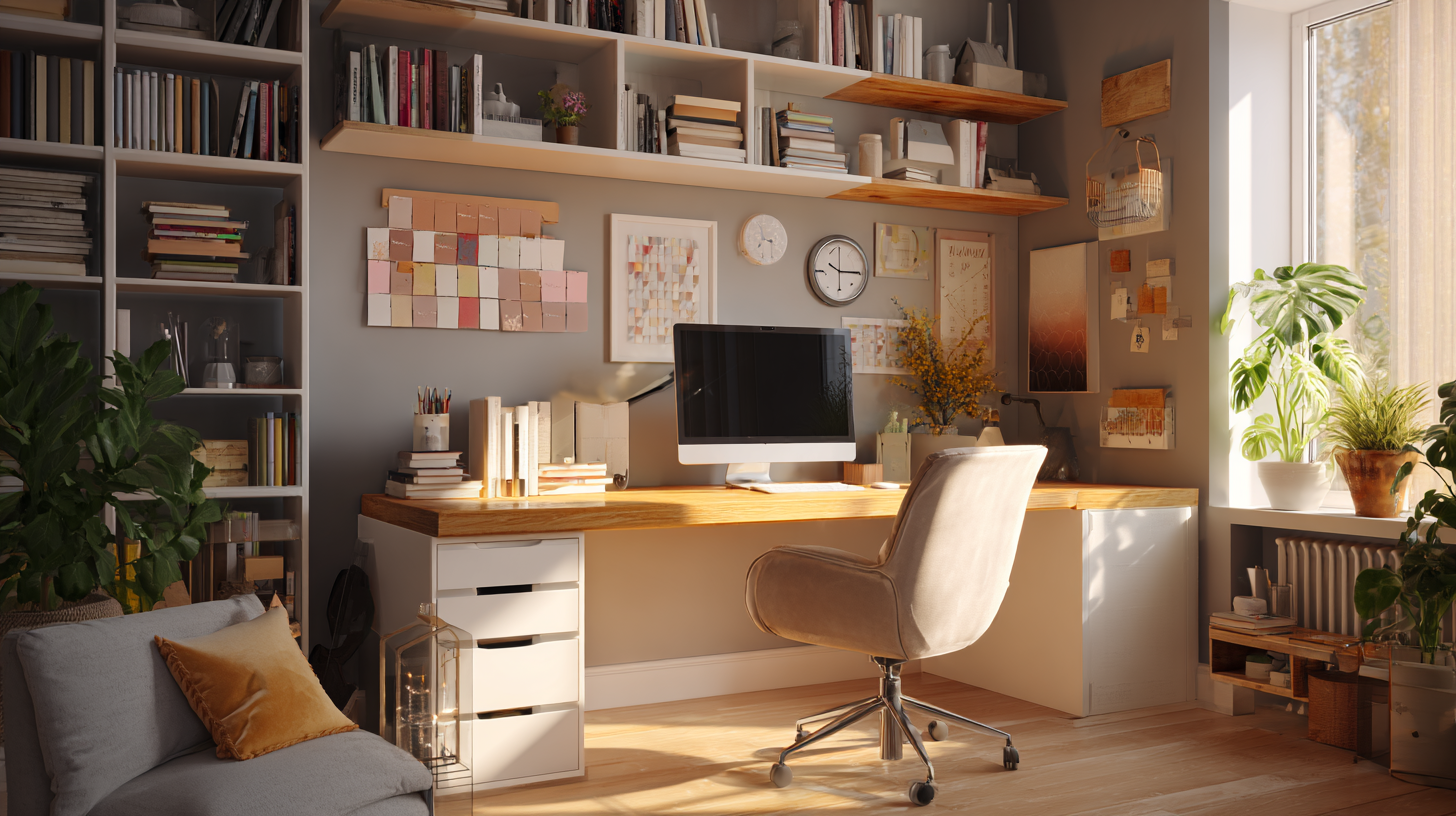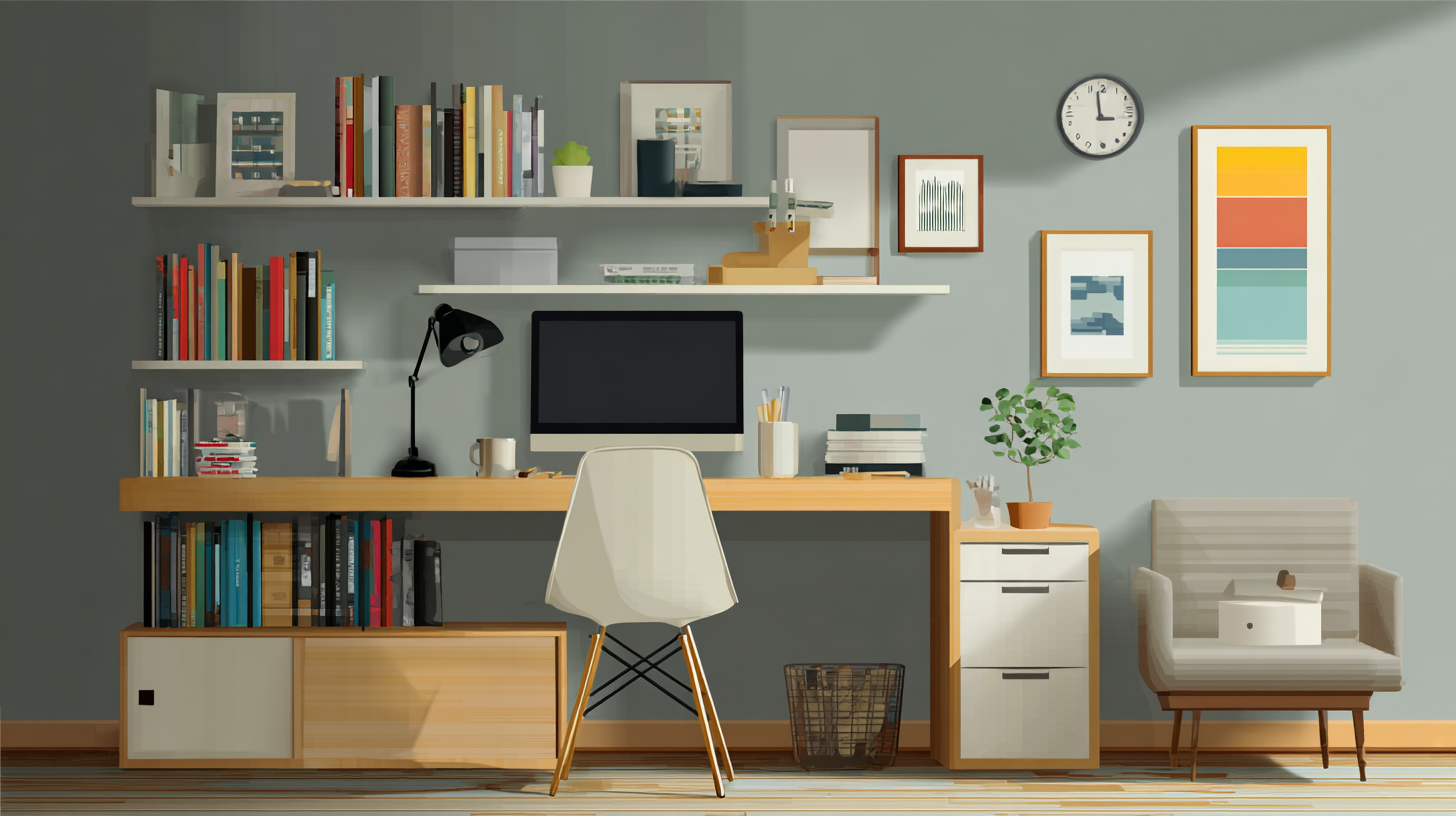7 Essential Tips for Choosing the Best Home Office Furniture to Boost Productivity
In today's rapidly evolving work environment, the significance of selecting the right home office furniture cannot be overstated. As more professionals transition to remote work, creating a productive workspace has become a top priority. The right furniture not only enhances comfort but also boosts creativity and efficiency, aligning with the industry's trends and technological advancements anticipated by 2025. With a plethora of options available, choosing the best home office furniture can be daunting. This blog aims to provide essential tips that will guide you in making informed decisions, ensuring that your workspace is tailored to your productivity needs while reflecting contemporary design standards. Embrace the fusion of functionality and aesthetics to transform your home office into a hub of innovation and efficiency.

Identify Your Space: Maximizing Ergonomics for Home Office Efficiency
Maximizing your home office efficiency starts with understanding your space and making ergonomic choices. According to a study by the Occupational Safety and Health Administration (OSHA), poor ergonomics can lead to increased discomfort and reduced productivity, costing businesses over $15 billion annually in workers' compensation. To combat this, it’s essential to create a layout that promotes healthy work habits.
Tip 1: Choose a height-adjustable desk. This allows you to alternate between sitting and standing, which has been shown to reduce fatigue and increase alertness. A study published in the Journal of Occupational Health Psychology found that employees using sit-stand desks reported a 32% improvement in productivity and a 28% reduction in overall discomfort.
Tip 2: Invest in a quality office chair. An ergonomic chair that supports your lower back can significantly decrease the likelihood of developing musculoskeletal disorders. Research from the American Chiropractic Association indicates that sitting for prolonged periods without proper support can lead to chronic pain, which can further reduce work efficiency.
By focusing on the ergonomic setup of your home office, you can create a space that not only boosts your productivity but also improves your overall well-being.

Understanding the Impact of Chair and Desk Height on Productivity Levels
When setting up a home office, the height of your chair and desk plays a crucial role in your overall productivity. An ergonomic setup allows for a natural posture, reducing strain on your back and neck. A chair that is too high or low can lead to discomfort, ultimately distracting you from your work. Ideally, your feet should rest flat on the floor, with your knees at a 90-degree angle. This position promotes better blood circulation and minimizes fatigue, allowing you to concentrate on tasks for longer periods.
Similarly, desk height is equally important. A desk that is too tall can cause you to hunch over, increasing the risk of musculoskeletal issues. Conversely, a desk that is too short may require you to raise your shoulders or bend your wrists awkwardly while typing. Finding the right desk height should complement your chair height to keep your elbows at a comfortable level while working. Investing time in selecting the proper chair and desk height can significantly enhance your comfort and efficiency, turning your home office into a space where productivity thrives.
Choosing the Right Office Furniture Materials for Health and Comfort
When selecting home office furniture, the materials used play a crucial role in maintaining both health and comfort. Research indicates that ergonomic furniture designed with appropriate materials can reduce the risk of musculoskeletal disorders by up to 40% (Ergonomics in the Workplace Report, 2022). For instance, chairs made from breathable fabrics can significantly enhance airflow and reduce sweat buildup, ensuring comfort during long work hours. Furthermore, desks crafted from high-quality, sustainable materials not only offer durability but also promote a healthier indoor environment by limiting exposure to harmful chemicals found in lower-grade materials.
In addition to comfort, the choice of office furniture materials impacts productivity levels. A study published by the Global Workplace Analytics in 2021 revealed that well-designed workspaces furnished with the right materials help improve focus, increase job satisfaction, and lead to a 20% boost in productivity. For instance, solid wood desks are known for their stability, which can help in maintaining focus, while memory foam cushions provide support to alleviate pressure points. Therefore, investing in ergonomic and quality materials is not just a matter of aesthetics but a vital component of creating a productive home office.
7 Essential Tips for Choosing the Best Home Office Furniture to Boost Productivity
Incorporating Smart Storage Solutions to Enhance Workflow and Reduce Clutter
When designing a home office, incorporating smart storage solutions is crucial for enhancing workflow and reducing clutter. An organized workspace not only minimizes distractions but also fosters creativity and focus. Consider multi-functional furniture pieces, such as desks with built-in shelves or filing cabinets, to maximize vertical space while keeping essential items within reach. Utilizing wall-mounted shelves can further free up valuable floor space and create a more open and inviting environment.

In addition to multifunctional furniture, implementing organizational tools like drawer dividers, cable management systems, and labeled bins can streamline your daily tasks. By assigning specific areas for supplies and documents, you can quickly locate what you need, which significantly reduces time wasted searching for misplaced items. Incorporating these smart storage solutions not only declutters your space but also creates a more efficient workflow, ultimately boosting your productivity in your home office.
The Role of Aesthetics in Home Office Design: Boosting Motivation and Creativity
The aesthetics of a home office play a crucial role in enhancing motivation and creativity, making it essential to thoughtfully design this space. One effective approach is to choose a color scheme that resonates with your personal style while promoting productivity. Soft neutrals can create a calming atmosphere, allowing for focused work, while vibrant accents can stimulate creativity and inspire new ideas. Incorporating biophilic elements, such as indoor plants or natural light, further connects you with your surroundings and fosters a sense of well-being.
Additionally, the choice of furniture and decor can significantly influence your workspace's overall vibe. Opting for sleek, modern designs can provide a sophisticated touch, while unique wall stickers or art pieces can infuse personality and character into the environment. Ultimately, every element in your home office should work harmoniously to create a sanctuary that not only supports productivity but also resonates with creativity and individual expression. By paying attention to these aesthetic details, you can cultivate an inspiring workspace that nurtures motivation and enhances your work experience.
7 Essential Tips for Choosing the Best Home Office Furniture to Boost Productivity - The Role of Aesthetics in Home Office Design: Boosting Motivation and Creativity
| Furniture Type | Key Features | Impact on Productivity | Aesthetic Contribution |
|---|---|---|---|
| Ergonomic Chair | Adjustable height, lumbar support | Reduces back pain, improves focus | Sleek design enhances workspace appeal |
| Standing Desk | Adjustable height, spacious surface | Boosts energy levels, encourages movement | Modern look, complements décor |
| Desk Organizer | Multiple compartments, easy access | Enhances organization, reduces distractions | Stylish designs can inspire creativity |
| Task Lighting | Adjustable brightness, focus lighting | Improves visibility, reduces eye strain | Artistic fixtures add character |
| Bookshelves | Various sizes, aesthetic finishes | Organizes resources for easy access | Showcases personality and interests |
